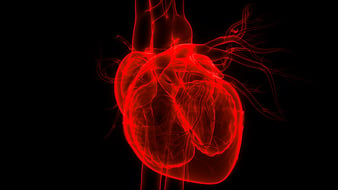10 Fascinating Heart Facts
By Susan Eymann, MS29 Sep 2021
- The heart is the first organ to develop and function after fertilization of a human egg and sperm. It is visibly beating by the fifth week of pregnancy.

- The heart sends five quarts of blood each minute into the circulatory system to nourish every cell in the human body.
- The heart beats more than 2 billion times during a person’s lifetime (2.5 billion in the life of a seventy-five year old).
- The heart is the size of a man’s fist.
- The heart consists of two pumps: a low pressure pump to send deoxygenated blood to the lungs, and a high pressure pump to send oxygenated blood into the circulation.
- The heart fills and empties in a second-long heartbeat of rhythmic contraction and relaxation.
- A pacemaker, originating at the tiny bundle of nerve tissue, the sinus node at the top of the heart, ignites a series of electrical impulses that causes the heart muscle to contract and beat.
- Paper-thin valves that are as sturdy as iron hinges, open and close with each heartbeat to control the passage of blood through the heart.
- The heart is nourished by two encircling coronary arteries that draw blood from the aorta and span out into a network of coronary tributaries that sink into the heart’s muscle wall and deliver oxygen to each cell in the heart.
- Once thought of as only a pump, it is now known that the heart also has intrinsic endocrine (hormonal) and neural functions.
Reference: The Incredible Machine, National Geographic Society, 1986, Washington, D.C.




